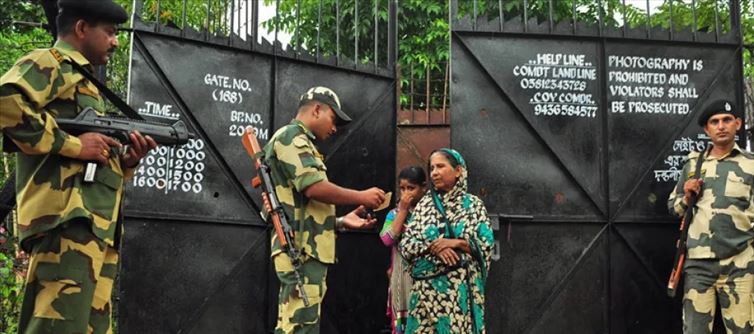
Aside from these considerations, a 1975 bilateral agreement between india and Bangladesh—to which the latter has frequently alluded—has become a contentious topic in the post-Hasina period and was raised in response to India's border fence efforts.
Building defensive fortifications within 150 yards of the international boundary is forbidden under the Joint India-Bangladesh Guidelines for Border Authorities, published in 1975.
"Until the definitive delineation of international borders is completed and the issue is settled, no permanent post will be built... According to the 1975 agreement, all defensive structures, including trenches, that are located within a 300-yard radius (150 yards on each side of the boundary) must be demolished or filled up.
Barbed wire fencing is not considered a "defense structure" in India. bangladesh, however, does.
Furthermore, bangladesh opposes India's deployment of "smart fencing" that is outfitted with CCTV and electronic monitoring tools, according to The indian Express, which quoted retired Inspector General Surjeet Singh Guleria, a 37-year veteran of the Border Security Force (BSF).
Consequently, the matter is handled through conversations on the ground when the 150-yard norm (per the Joint India-Bangladesh Guidelines for Border Authorities, 1975) cannot be adhered to because of physical or topographical limitations, such as villages. In these situations, BSF and BGB officials, after reaching a mutual understanding, move the fence closer to the zero line, the real frontier, to get over the physical barrier.
A news statement from the Ministry of home Affairs in august 2022 states that 3,141 kilometers of the 4,096-kilometer border are walled. This means that about 23.35 percent of the border is unfenced. For many years, illegal immigration into india has been caused by the sheer lack of fence, which is frequently seen close to rivers or populated areas.
Even Bangladeshis use violence and throw rudimentary explosives to prevent border barriers, so it's not only the BGB. The locals use an unfenced border to smuggle people into india and commodities and animals into Bangladesh.




 click and follow Indiaherald WhatsApp channel
click and follow Indiaherald WhatsApp channel